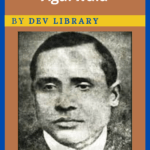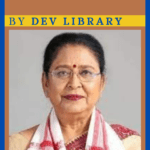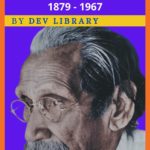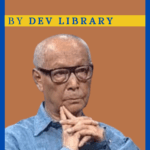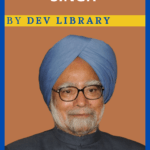India lost countless Indian youths in the freedom struggle that started all over India against the British. Among them, Bhagat Singh is one of the most admired freedom fighters of all time. Bhagat Singh is a great patriot in the true sense
He did not hesitate to sacrifice his life fighting from the front for the independence of the country. The death of Bhagat Singh, who laid down his life for the country at the age of 23, had stirred the tide of patriotism across the country at that time.
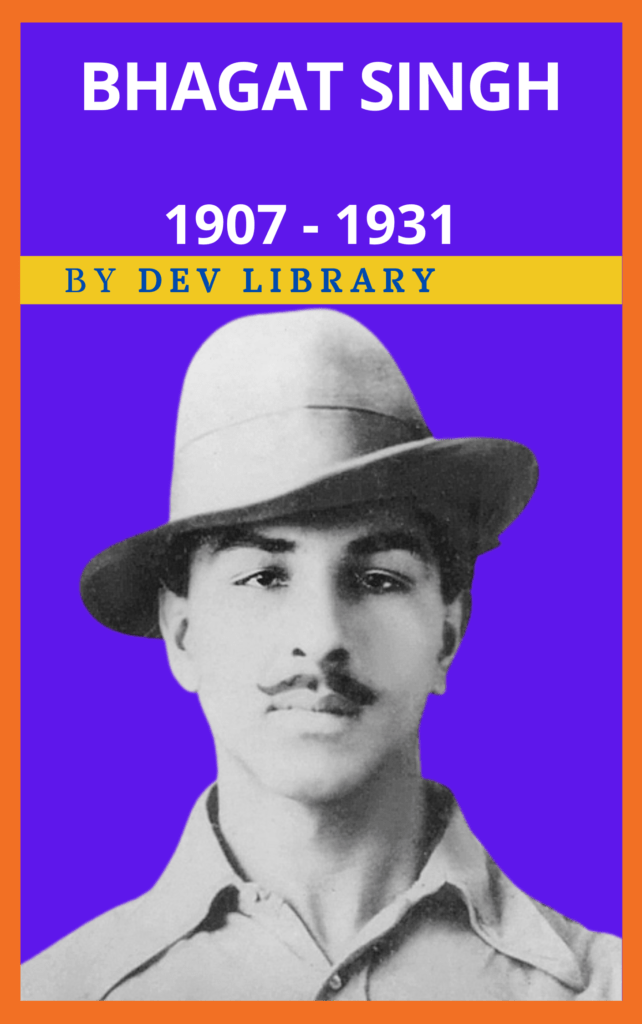
Biography of Bhagat Singh
| Name | Bhagat Singh[1] |
| Date of Birth | September 28, 1907 |
| Place of Birth | Kalan Village, Lyallpur District, Punjab (now Pakistan) |
| Father’s Name | Kishan Singh Sandhu |
| Mother’s Name | Vidyavati Kaur |
| Education | 1/ Primary School located in Banga village 2/ Anglo Vedic School 3/ National College, Lahore |
| Death | March 23, 1931 |
Early Life of Bhagat Singh
Bhagat Singh is a brave warrior and rebel who sacrificed his life for India’s liberation from the British rule. Bhagat Singh was born on September 28, 1907, into a Sandhu family in the Kalan village (now part of Pakistan) near Banga in Punjab’s Lyallpur district. Singh’s father’s name is Kishan Singh Sandhu and mother’s name is Vidyavati Kaur. Bhagat Singh, the second child of his parents, grew up in the midst of a nationalist thought. This family with a strong nationalist thought was also involved in the freedom movement. Bhagat Singh’s father and his uncle Ajit Singh, who believed in progressive political thought, took part in the movement against the Canal Colonization Bill in 1907 and actively participated in the Ghadar movement in 1914-1915. It may be recalled that Singh’s father Kishan Singh was in jail after taking part in the movement against the Canal Colonization Bill at the time of Bhagat Singh’s birth. Bhagat Singh was naturally attracted from a young age to an ideology that carried the trend of struggling politics through his family.
Bhagat Singh, who started his formal education at the primary school in Banga village, later enrolled in the Anglo Vedic School in Dayanand Saraswati Anglo-Vedic School in Lahore. Significantly, in 1923, he joined the National College in Lahore founded two years earlier by Lala Lajpat Rai in response to Mahatma Gandhi’s non-cooperation movement. This is because Mahatma Gandhi urged Indian students to stay away from the schools and colleges provided subsidy by the British government. After enrolling in the National College in Lahore, Bhagat Singh studied the European revolutionary movements. As a result, he was disillusioned with Gandhi’s non-violent views and began to believe that the only way to gain political freedom was in the armed struggle.
Also Read: Biography of Sukhdev Thapar
Revolutionary Activities
Bhagat Singh, who was attracted to anarchism and communism joined several revolutionary organisations, wanted to confine him to the worldly bond while he was studying in college. But instead Singh dedicated himself to the country and denied the family’s advice and left the house and reached Kanpur. It is to be noted that Bhagat Singh’s life started moving on a different road ever since he moved to Kanpur. In Kanpur, Singh started his professional career by working in the printing press of a man named Ganesh Shankar Vidyarthi. It is worth mentioning that there was a regular meeting of freedom fighters and political activists at the residence of Congress member Ganesh Shankar Vidyarthi where Bhagat Singh was working. Singh met several revolutionary leaders of the Hindustan Republican Association (later known as the Hindustan Socialist Republican Association) at the residence of Ganesh Shankar Vidyarthi. In 1924 he became a member of the Hindustan Republican Association. Contrary to Mahatma Gandhi’s idea of non-violent, one of the objectives of the Hindustan Republican Association was to bring India’s independence through an armed revolution and to establish a federated republic in the United States. But unfortunately, in a special case called the Kakori Conspiracy Case, most of the leaders of the Hindustan Republican Association had to be imprisoned while many leaders were hanged by the British government. In view of this, many other leaders, including Bhagat Singh, took charge of the Hindustan Republican Association but subsequently in order to carry on the unfinished affairs of H R A, Bhagat Singh played a key role in the establishment of the Naujavan Bharat Sabha (Youth Society of India) in 1926 along with Sukhdev Thapar and he took over as the General Secretary of the organization. Apart from preparing the youth for the freedom struggle against the British through the Naujawan Bharat Sabha, they also took various positive steps for the working and peasant class in protest against communalism and untouchability that developed a rational scientific temper. Under the able leadership of Bhagat Singh, the newly formed organization expanded in several states of India. It is important to note that it was during this time that Bhagat Singh’s popular slogan across the country, Be It Long Live (Inqilab Zindabad), became popular among all.
Bhagat Singh is with a completely opposite thought from the ideals of Mahatma Gandhi. During the period of 1925-1928, he thought of making the freedom struggle and the socialist revolution pro-people. In view of this, with the aim of making some changes in his political agenda and spreading socialist thinking among all in parallel with independence, he made efforts to unite all the revolutionary parties and organizations of India and form a united struggle for all. With the objective of his efforts being fulfilled, a secret meeting was held under the leadership of Bhagat Singh on September 8 and 9, 1928 at the Firoz Shah Kotla in Delhi. It is to be be noted that it was at this meeting that the Hindustan Republican Association was renamed as Hindustan Socialist Republican Association. It is to be noted that it was at this meeting that it was decided to join the movement to boycott the Simon Commission of the Hindustan Socialist Republican Association.
In 1928, the British government set up the Simon Commission to report on the political situation in India. Some Indian political parties boycotted the Commission because there were no Indians in its membership, and there were protests across the country. Protests were held unitedly across India against this decision of the British irrespective of party or opinion. Lahore was no exception. A series of meetings were held in Lahore against the commission. On October 30, 1928, when the Simon Commission visited Lahore, many people protested peacefully outside at the The Lahore station. Lala Lajpat Rai led a march in protest against it. The protest was peaceful and orderly, but the police attempts top disperse the large crowd resulted in violence. However, the protestors were lathi charged (batons) by the government police force led by superintendent James. A. Scott of police and as a result, a large number of protesters were injured and as a result Lala Lajpat Rai, who was seriously injured by the police baton, later succumbed to death.
Importantly, despite a clear difference of opinion with Bhagat Singh’s political ideology with Lala Lajpat Rai, he and his struggling colleagues like Sukhdev Thapar, Chandrashekhar Azad, Rajguru etc conspired to kill police superintendent Scott on December 17, 1928, nearly a month after the death of Lajpat Rai to avenge the murder of Lala Lajpat Rai. But by mistake, instead of Scott, they shot and killed police officer John P. Saunders. It is to be noted that the British escaped arrest despite extensive raids to arrest the killers of John P. Saunders.
Death
Subsequently, the British Government passed the Trades Disputes Bill on April 8, 1929 in the Central Legislative Assembly. Bhagat Singh and Dutta dropped two bombs into the legislature chamber in protest against the Public Safety Bill and the Trade Dispute Bill. However, instead of killing people through bombs, their sole purpose was to protest against the Anti-Labour Trades Disputes Act. They did not run away because they took up the task with positive intentions for which the police easily arrested and sentenced Bhagat Singh and Batukeshwar Dutta to life imprisonment. It is to be noted that the British government got evidence that Bhagat Singh was involved in the killing of Saunders. Along with him, the British government arrested other members of the Hindustan Association including Sukhdev and Rajguru. It is important to note that after the completion of this trial, the government ordered that Bhagat Singh be sentenced to death.
Even after being ordered to be hanged, Sukhdev Thapar, Bhagat Singh and their associates tried to awaken the public from jail with a strong attitude without being at all perturbed. Even while in jail, Singh had left behind a draft of the revolutionary programme for the sake of future struggle. Singh along with Sukhdev and Rajguru was later hanged on March 23, 1931.
It is important to note that Bhagat Singh was a very studious man with a struggling spirit. He was the author of many books. Bhagat Singh’s notable books are – “Why I Am an Atheist”, “Ideas on freedom”, “liberty and revolution: Jail notes of a revolutionary”, “Jail Diary and Other Writings”, “Ideas of a Nation”, “No Hanging” etc.
Conclusion
Bhagat Singh’s supporters did not support Bhagat Singh for aggressively trying to lure India’s independence against the principle of non-violence, but Singh’s followers called him a martyr. Bhagat Singh, who laid down his life for the country at the age of 23, is not supportive of his ideals and vision, but it is desirable to accept his love for his country.
FAQs
1. When and where was Bhagat Singh born?
Ans: Bhagat Singh was born on September 28, 1907, into a Sandhu family in the Kalan village (now part of Pakistan) near Banga in Punjab’s Lyallpur district.
2. What is the father’s and mother’s name of Bhagat Singh?
Ans: Singh’s father’s name is Kishan Singh Sandhu and mother’s name is Vidyavati Kaur.
3. What was the popular slogan given by Bhagat Singh?
Ans: Be It Long Live (Inqilab Zindabad).
4. How old was Bhagat Singh when he died?
Ans: He was 23 years old when he laid down his life for the country.
5. How did Bhagat Singh died?
Ans: He was hanged by the British government for the death of officer J.P. Saunders in the city Lahore.
6. When did Bhagat Singh died?
Ans: On March 23, 1931.

Hi, I’m Dev Kirtonia, Founder & CEO of Dev Library. A website that provides all SCERT, NCERT 3 to 12, and BA, B.com, B.Sc, and Computer Science with Post Graduate Notes & Suggestions, Novel, eBooks, Biography, Quotes, Study Materials, and more.


